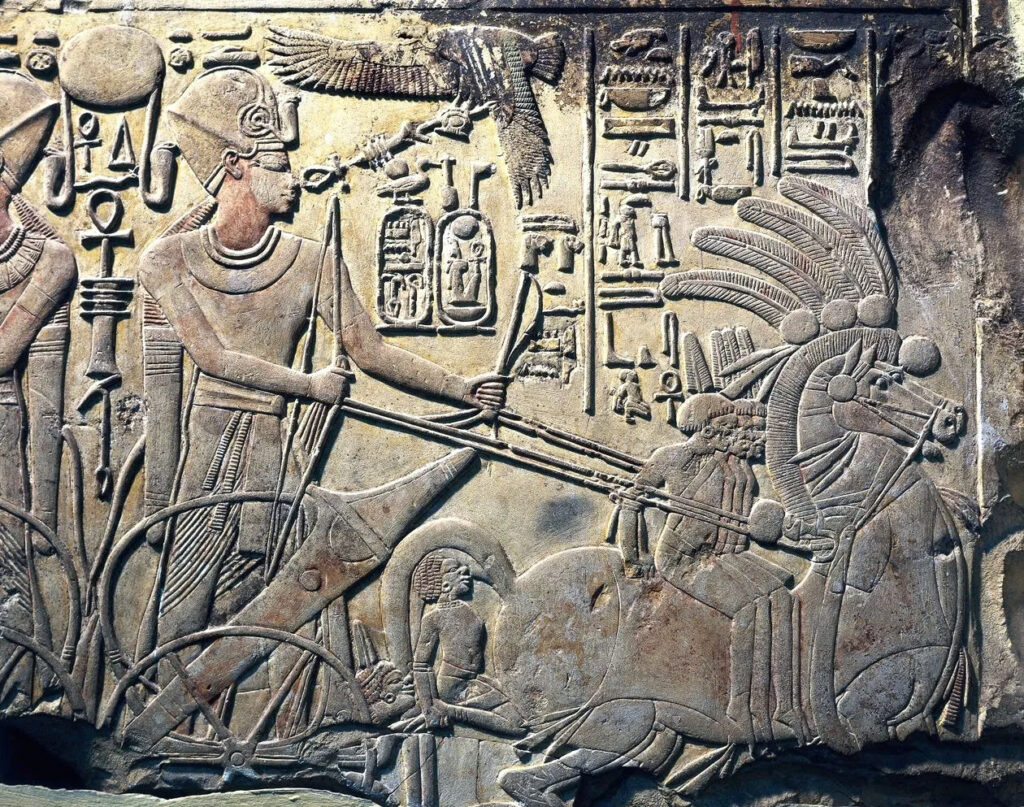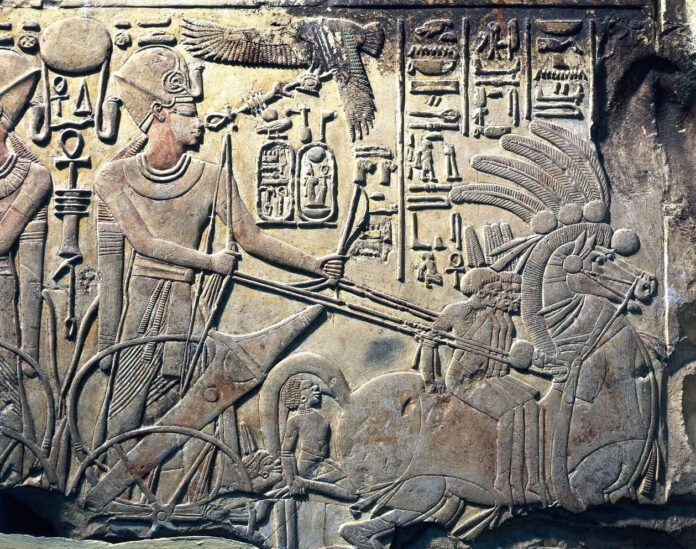Unveiling the Story Behind the Stone

In the heart of ancient Egypt, a remarkable artifact stands as a testament to the might and grandeur of one of its greatest pharaohs. The stele of Amenhotep III, now housed in the Egyptian Museum in Cairo, offers a fascinating glimpse into the world of Egyptian royalty and their portrayal of power.
A Monument to Victory
Erected during the reign of King Amenhotep III (c. 1391-1353 BC), this stele was created to commemorate the pharaoh’s triumph over his adversaries. The intricate carving tells a story of conquest and divine protection, frozen in time for over three millennia.
Scenes of Royal Might
The stele’s surface is alive with vivid imagery. At its center, we see King Amenhotep III standing proud in his horse-drawn chariot. Above him, the protective wings of the goddess Nekhbet stretch out, bestowing upon him the symbols of life, stability, and dominion.

The pharaoh is depicted as a warrior king, with a quiver of arrows slung across his back and a larger one secured to his chariot. This image of martial prowess is further emphasized by the grim fate of his enemies. The contorted bodies of bound captives from southern regions lie beneath the king’s feet and are tied to his chariot, a stark representation of Egypt’s supremacy.
Reality or Royal Propaganda?
Interestingly, historians note that Amenhotep III’s reign was largely characterized by peace and prosperity. This raises an intriguing question: do these scenes depict actual military campaigns, or are they symbolic representations of the pharaoh’s power? The answer remains a mystery, adding an extra layer of intrigue to this ancient masterpiece.
From Desert Sands to Museum Halls
The journey of this stele from creation to discovery is itself a tale worth telling. Unearthed at Kom el-Hettân by the renowned archaeologist Flinders Petrie, it now resides in the Egyptian Museum in Cairo, catalogued as JE 31409. Here, it continues to captivate visitors, offering a window into the complex world of ancient Egyptian royalty and their enduring legacy.

